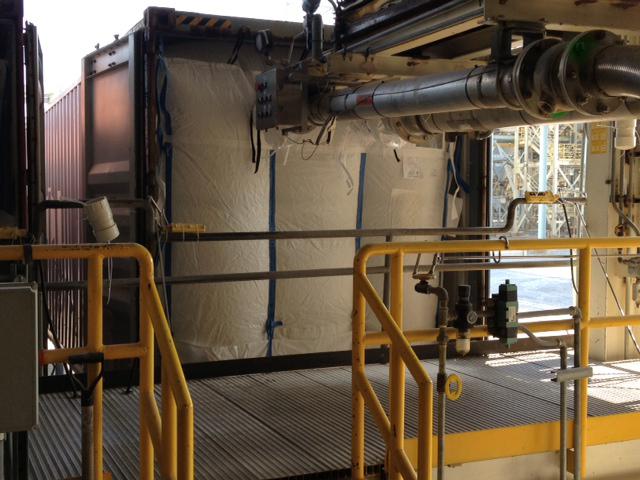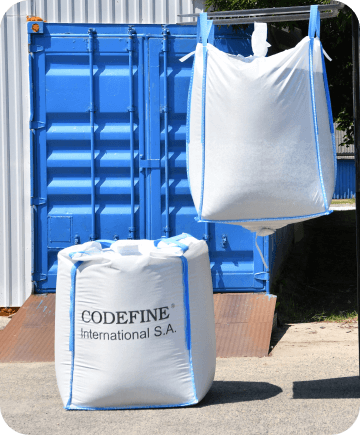Home » Posts Page » Blog » How To Recycle Polypropylene Bags

It’s little wonder that so many businesses are confused when it comes to polypropylene recycling. In everyday life, you can’t always drop something as simple as a plastic bag off your nearest recycling point. While recycling this thermoplastic isn’t always straightforward, many organizations have successfully introduced a polypropylene bags recycling program.
Learning how to recycle woven polypropylene bags is essential if you’re serious about making your business more sustainable. Read on to find out more about polypropylene, how it’s used, and what the recycling process involves.

Polypropylene (PP), a type of thermoplastic polyester, is commonly used to manufacture all manner of things. Products made from it are found everywhere from shop window displays to surgical rooms. Specific forms of PP, such as polypropylene fabric, are often used to create hard-wearing textiles for industrial applications. Thanks to its chemical resistance, it also tends to be the material of choice for packaging things like cleaning products and some first-aid supplies.
With so much PP in circulation, robust recycling programs are incredibly important. You may find it a challenge to recycle plastic bags in everyday life, but the material itself can indeed be recycled. When used at an industrial scale, the need for PP recycling is obvious, especially as more businesses face greater calls to operate more sustainably.
Polypropylene is an incredibly versatile material. As such, once it’s recycled, it can be repurposed into a wide range of products. Recycled polypropylene can be transformed into cooking utensils, clothing fibers, and even materials for the industrial sector. However, recycling this marvel material isn’t always straightforward. Below, we’ll explore some key types of polypropylene products and whether or not they can be recycled.
The majority of polypropylene bags are constructed exclusively from plastic. This makes them long-lasting and reusable but also makes plastic bag recycling a possibility. However, recycling PP bags is a little more complicated than placing them in the right recycling bin.
Once polypropylene bags have been collected and sorted, they’re then shredded. The shredded material is then sorted and separated by color before it’s ready for further processing. It’s a long process, but an essential one. Currently, only a tiny fraction of polypropylene is recycled, with the remaining material dumped in landfills. Eventually, these plastics will decompose, but that spells bad news for the environment. As it breaks down, PP produces toxic fumes, while harmful chemicals can leach into the soil beneath.
Flexible intermediate bulk containers (FIBCs) are a common sight in industrial settings. Otherwise known as bulk bags, they’re also suitable for recycling. In fact, an entire industry has emerged in recent years to cater to a growing demand for bulk bag recycling services.
However, recycling a bulk bag requires you to follow a strict process. Here, a closed-loop system is essential, with each bulk bag having to go through rigorous cleaning and reconditioning before it can be signed off as suitable for future use. What’s more, a recycled bulk bag should only be used for what it was designed for in the first place. In order to streamline the process, customers looking to recycle need to work closely with manufacturers and any recycling agents they’re using.
Woven PP is what most polypropylene bags are created from. This same material is also used to produce a huge array of different products. PP fabric can be purchased by the roll, with the material then used to create other everyday products like storage sacks for dry goods like coffee and grains. Because polypropylene fabric is so widely used, it can confuse things when deciding on whether or not to recycle it. The important thing to remember here is that polypropylene fabric in all its forms is recyclable, no matter what it’s been used for.
Even though all kinds of polypropylene film can be recycled, very little is. This issue is compounded by the fact that similar products, such as cellophane, can’t be recycled at all. Admittedly, recycling PP film comes with a few challenges.
As a great deal of PP film is used by the food industry, film material often needs to be washed before it’s ready to be processed for recycling. The issue here is that the material needs to be completely dry before it can be processed, leading to wait times that aren’t practical for many businesses.
Fortunately, more recycling providers are beginning to accept PP film for processing.
Air pillows and bubble wrap are commonly used to protect delicate items in transit. However, as with other packaging materials, they can’t be reused by the supply chain without being recycled first. Bubble wrap is made from low-density polyethylene (LDPE), while high-density polyethylene (HDPE) is generally used to make air pillows. As we know, both of these polyplastics are suitable for recycling.
You won’t find polypropylene readily accepted by curbside recycling programs. The material can cause issues for standard equipment, meaning that this material has to be processed completely separately.
The recycling process starts with polypropylene being collected and hauled to a PP recycling facility. Some businesses may handle the logistics themselves, while others will use a dedicated recycling provider. When using PP at an industrial scale, compactor equipment can prove useful in streamlining the process.
Once the material has been collected, the sorting process begins. Anything that’s not PP is removed at this point. The density of the material may also be used to decide how it’s sorted. This sorted material then undergoes a thorough cleanse, with any harmful contaminants removed or chemical traces removed.
Once all the prep work has been taken care of, most of the material will then be shredded. These shredded pieces are then sorted again, with things like color, shape, size, and melting point used as guidelines. As this is a machine-operated automated process, categorization can be incredibly detailed, ensuring separation is as specific as possible.
Compounding is the last piece of the PP recycling puzzle. Shredded and sorted PP passes through an extruder, which uses incredibly high temperatures to melt polypropylene into small particles. Ultimately, PP granules or pellets are produced. These then serve as the raw material for manufacturing more plastic products.
Polypropylene is a remarkably versatile material, with endless applications and a significant market value. However, many businesses overlook the fact that it can be recycled. As consumers become more eco-conscious, so too must the companies that serve them. If you’re failing to commit to sustainable packaging and industry-wide recycling, you run the risk of putting yourself at a distinct disadvantage.
At Codefine, sustainability is at the heart of our operation. For more than 60 years, we’ve been supplying premium packaging solutions to global brands across many industries. As well as meeting all industry standards, all of our polypropylene bags are completely recyclable. Searching for other packaging options? Explore the full product range online today for yourself. Alternatively, get in touch to speak with the team about your packaging requirement in more detail.